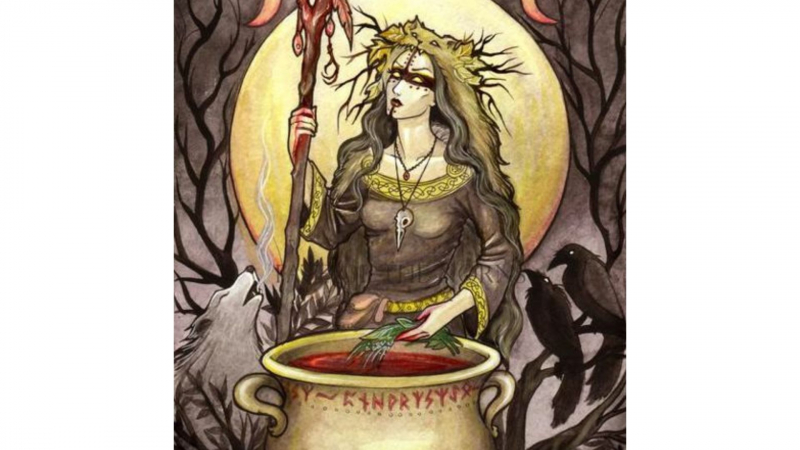Gullveig

The Poetic Edda's account of the conflict between the Aesir and Vanir clans made mention of the Vanir goddess Gullveig. She was skilled in seidr, a form of Norse magic that allowed one to see into the future and alter fate, and she possessed strong magical abilities. This Goddess is only referenced in the Poetic Edda, where it is said that she was burned three times during the conflict, spear-stabbed by the Aesir, and then reborn three times thanks to her magical powers. Due to their similar skills and biographies, some academics believe that she and Freyja are the same person under a different name.
The origin of the Old Norse name Gullveig is still a mystery. Although the second part, which can also be found in other personal names like Rannveig, Sölveig, or Thórveig, is a composite constructed with the Old Norse word for "gold" (gull), it is yet unknown. It might have been a code for "power, strength," "intoxicating wine," "woman," or perhaps "gold, gold thread." The term has been interpreted variously as "Gold-drink," "Gold-drunk," or "Gold-draught". Some people believe that Gullveig represents pure gold that has gone through numerous smelting processes. Semantically related is the name Heir, which in adjectival form means "bright, clear". Even if Gullveig's name changes to Heir, according to scholar Rudolf Simek, the connotation essentially stays the same.
Numerous academics, starting with Gabriel Turville-Petre, have proposed that Gullveig/Heir and Freyja are the same person. These researchers include Rudolf Simek and John Lindow. Since the Ynglinga Saga claims that Freyja brought seid to the Aesir first, Lindow argues that Gullveig might be Freyja and that she brought seid to the Aesir in the first place as a war plan or as the catalyst for the commencement of the conflict. Orchard goes on to say that Freyja, like Gullveig, is linked to gold and the seid school of magic.











